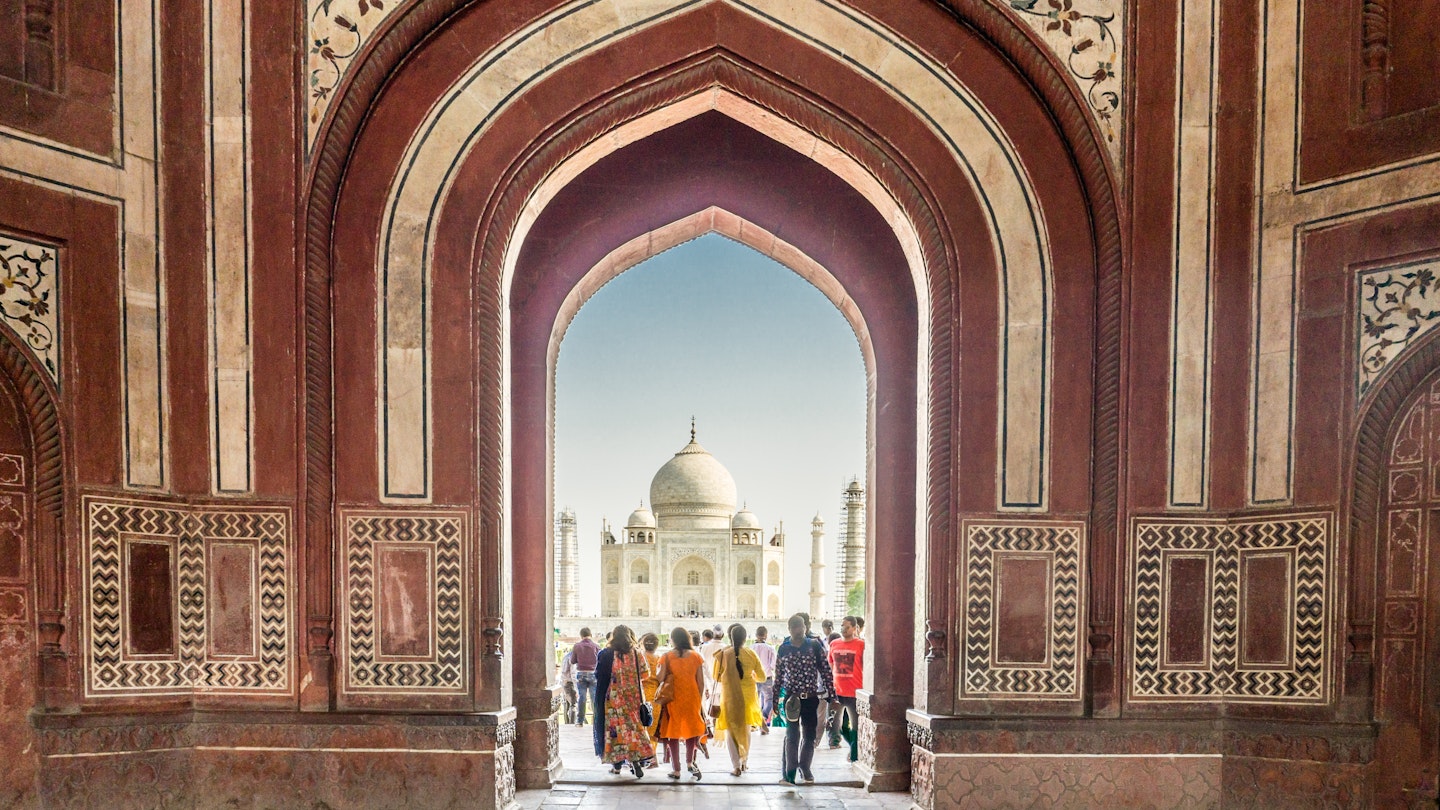Discovering the Architectural Legacy of the Mughal Empire in India
Throughout history, the Indian subcontinent has witnessed the rise and fall of remarkable empires, yet none resonate as vividly as the Mughals. Originating from present-day Uzbekistan, the empire established by Babur swept across India in the 17th century, leaving an indelible impression on its culture, architecture, and identity.

Many iconic features of modern India—including romantic forts, palaces, ornate arches, and onion domes—were constructed by the Mughals as they expanded their empire across the subcontinent. Although some rulers displayed ruthlessness, the Mughal dynasty was also characterized by cultural patronage and a rich appreciation for music, poetry, and the arts, fostering an era of significant economic prosperity.
The Timeless Majesty of the Taj Mahal
Few monuments evoke the splendor of Mughal India as effectively as Agra’s Taj Mahal. Built by Emperor Shah Jahan in 1632 as a tribute to his beloved wife, Mumtaz Mahal, this mausoleum is often regarded as the most exquisite expression of love. Yet, it also reflects the emperor’s grandeur, designed by the finest architects to withstand the passage of time. The architectural perfection of this white marble masterpiece continues to mesmerize visitors, despite the throngs of tourists.
Getting there: The Taj Mahal is strategically located in the heart of Agra, easily reachable by plane, train, or bus from Delhi. For a special experience, consider staying in Taj Ganj, which may offer stunning views of the Taj from your hotel rooftop.

Delhi’s Forts, Minarets, and Bustling Markets
Delhi serves as the birthplace of the Mughal Empire, established after Emperor Babur’s conquest in 1526. It was also here that the last Mughal emperor, Bahadur Shah Zafar, sought refuge in the tomb of his ancestor Humayun in 1857, marking the end of an era.
Much of Old Delhi showcases Mughal architecture, from the grand walls of the Red Fort to the magnificent Jama Masjid. To immerse yourself in the Mughal atmosphere, climb the southern minaret and observe the colorful paper kites flying over the rooftops. You can also take an autorickshaw to the serene gardens of Humayun’s tomb and explore the beautifully restored Sunder Nursery.
Getting there: Delhi’s Indira Gandhi International Airport is a major hub, with flights arriving from around the globe. Domestic travel options abound, with trains and buses connecting diverse regions.

The Forgotten City of Fatehpur Sikri
During the Mughal era, Indian capitals frequently shifted as emperors sought to establish the most magnificent cities in the most unlikely places. At Fatehpur Sikri, located near Agra, water accessibility proved to be a significant challenge.
Emperor Akbar initiated the construction of a new imperial city to celebrate his military victories, but even the most skilled craftsmen couldn’t overcome the environmental obstacles. After just 14 years, the city, complete with mosques, palaces, and ornate meeting halls, was deserted. More recently, it has become a hauntingly beautiful site marked by crumbling sandstone walls and intricately carved screens that seem frozen in time.
Getting there: Fatehpur Sikri is a simple excursion from Agra, with frequent buses from Igdah Bus Stand available throughout the day. Alternatively, you can opt for a second-class train ticket for an authentic Indian travel experience.

Itmad-ud-Daulah: Agra’s Other Mughal Mausoleum
Mughal architects endeavored to refine the design of Islamic mausoleums, achieving a pinnacle with the Taj Mahal. However, countless other impressive tombs capture the same elegance. Humayun’s tomb in Delhi ranks closely, yet many overlook the exquisite Itmad-ud-Daulah in Agra, a delicate masterpiece in white marble constructed in 1628 for Mirza Ghiyas Beg, Mumtaz Mahal’s grandfather.
While the Taj is grand and imposing, Itmad-ud-Daulah radiates subtlety and sophistication, its gentle corner minarets gracefully aligned with the surrounding trees. The pietra dura inlays, showcasing intricate designs of flowers and motifs, enhance its ethereal beauty.
Getting there: To visit Itmad-ud-Daulah, consider taking a cycle rickshaw from Taj Ganj, making stops at the 17th-century Chini-ka-Rauza and the Mehtab Bagh gardens.

The Mughal Gardens of Srinagar
Inspired by the Char Bagh (the four gardens of paradise), the formal gardens designed by the Mughals aimed to mimic celestial beauty through elegant pavilions, flowing water features, and vibrant flowers. These gardens provided emperors with peaceful retreats, allowing them to reflect before the next campaign.
Srinagar, the picturesque capital of Jammu & Kashmir, features the ultimate embodiment of Mughal gardening with its lush landscapes descending from the hills towards the tranquil Dal Lake. Shalimar Bagh and Nishat Bagh remain pristine, showcasing long rows of chinar trees reflecting in serene pools linked by delicate streams.
Getting there: Srinagar offers easy flight connectivity from Delhi and other northern cities. If traveling by train, you will need to switch to a bus or jeep at Jammu until the new Jammu–Baramulla line becomes operational. Prior to traveling, ensure to check the local security situation due to ongoing regional tensions.

Taj-ul-Masjid: The Largest Mosque in India
By the time Bahadur Shah Zafar began his reign in 1837, the Mughal Empire faced pressure from British colonial forces and resurgent Hindu and Sikh kingdoms. After the uprisings of 1857, he was dispossessed from the Red Fort, becoming a symbolic ruler rather than a sovereign.
The legacy of the last Mughal still flourishes in Bhopal, where the Taj-ul-Masjid rises dramatically beside the Motia Talab lake. Built over 57 years, starting in 1844, this stunning mosque covers a sprawling 250,000 square feet, featuring three gleaming onion domes and two imposing minarets.
Getting there: Bhopal welcomes flights from Delhi, Mumbai, and other northern cities, or you may travel by bus or train. While visiting, consider also exploring the nearby Gauhar Mahal palace and the Jama Masjid.




